So this amounts to a chronological retelling of the story to date, this time with photos, starting a couple weeks back now. Perhaps not in as much detail as my minute-by-minute updates, but a good overview of the run to date.
June 21st, 2012
The ongoing health problems with the Lightning Maroon remained, and the left eye on the Lightning Maroon was showing slight swelling.
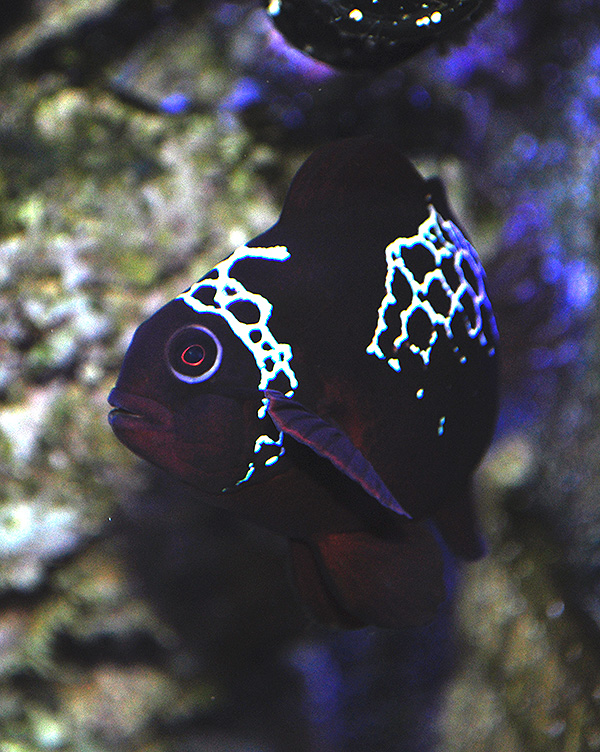
On a day initially planned to do a skin-scrape of the fish for further examination, I had to call things off because the fish had started going through pre-spawn motions.
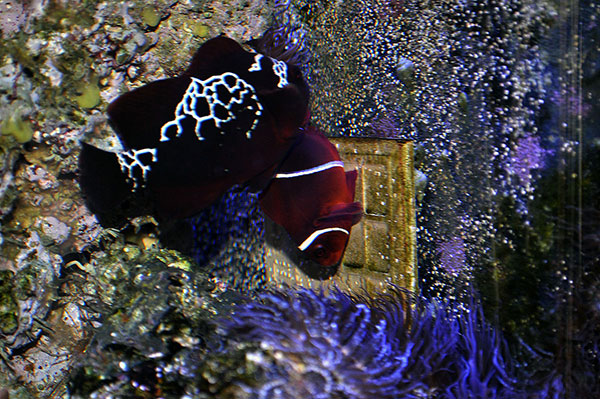
By the time we had finished doing a skin scrape on some Banggai Cardinalfish downstairs, Barb & Heidi from the Great Lakes Aquarium got a super special treat, seeing the actual nest having been spawned while they were here.
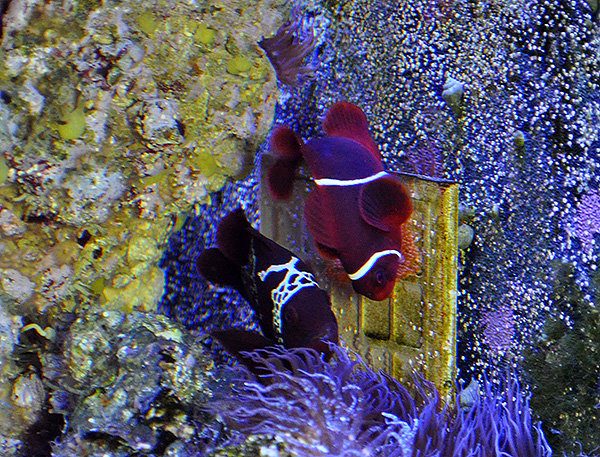
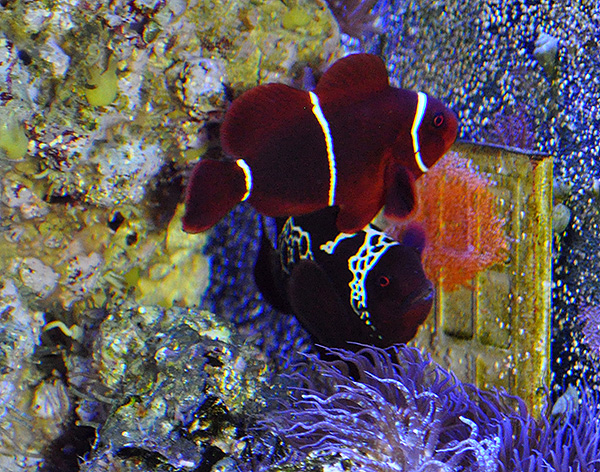
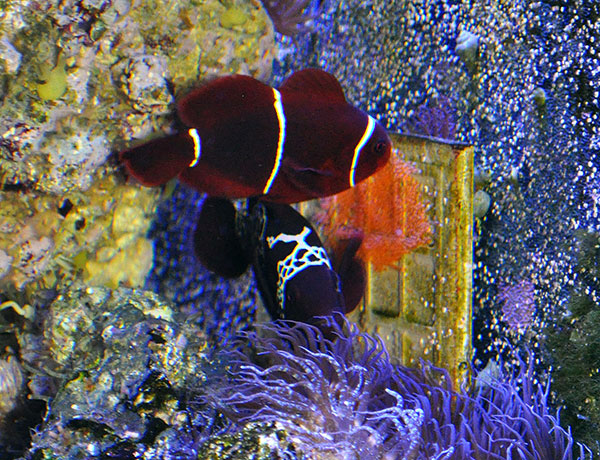
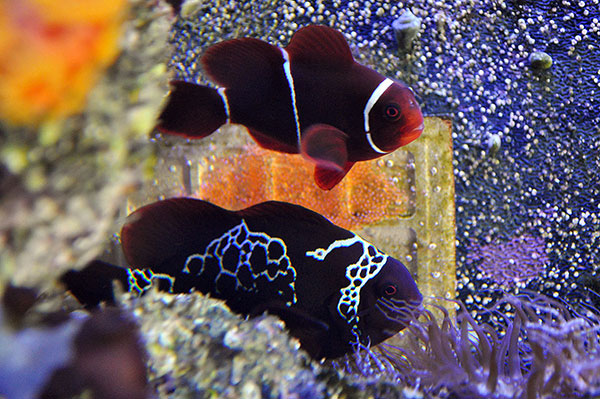
June 22nd, 2012
I was genuinely worried whether we’d have eggs 24 hours in. Thankfully, they proved to be good parents and good “clownfish”; the first spawn egg eating proved to be the typical first test run that so many clownfish seem to do. This batch, while I didn’t get a good photo of the parents, was doing well. The swelling on the Lightning Maroon’s eye had gone away. Phew.
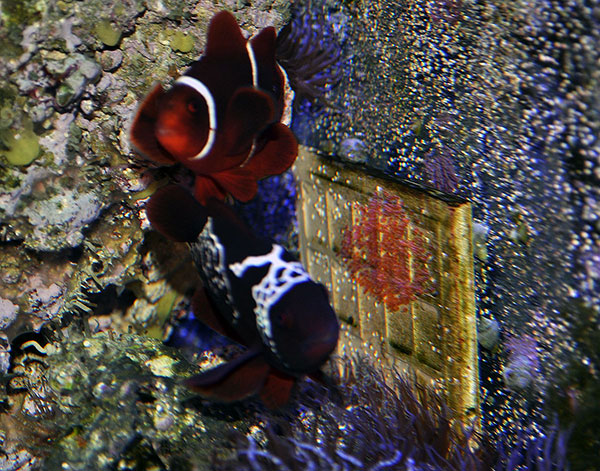
June 23rd, 2012
So much for resting easy about the health of the Lightning Maroon. The eggs were developing (a fair number that probably were infertile or diseased were removed by the pair), but some funky gunk (yes, that’s the scientific term) showed up on the Lightning Maroon’s right face. I was once again on high alert; this wasn’t pop-eye; this was more reminiscent of the mouth-rot I had to battle back a little while ago.
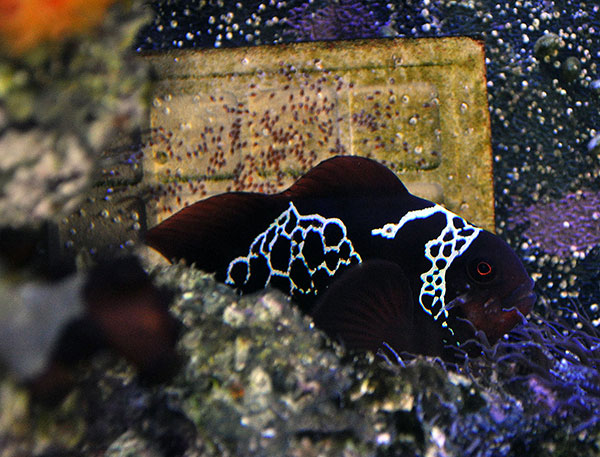
June 24th, 2012
So much for being on alert. By evening, things looked so bad on the Lightning Maroon’s face that I pulled the trigger and initiated the third course of treatment with Maracyn SW and Maracyn II SW in this system. The telltale bulge around the right eye had started to show as well. I felt I had little other option at this point; this fish is simply too valuable to take a wait and see approach when symptoms like these show up:
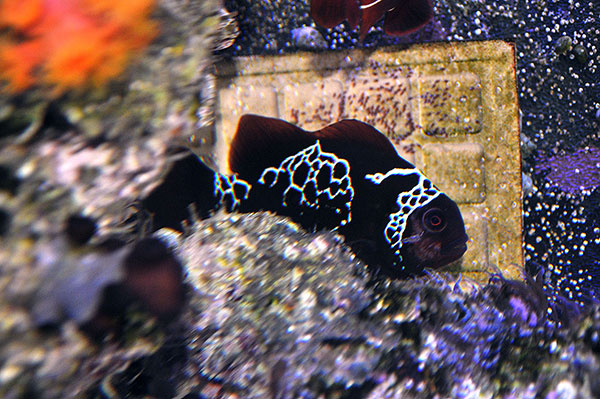
The eggs were looking good and developing fast, although I took little comfort in that given the current situation with the Lightning Maroon. The roller coaster of stress over this fish during the past couple months has been excruciating. No doubt, there were times I pondered whether it would all be easier if the fish just passed away – of course solely a passing fancy, but when things are clearly out of your real control, it is incredibly tough to sit there and do “what you can”. Of course, it’s a whole new level now that we are well within sight of the next major milestone in this 2+ year long project.
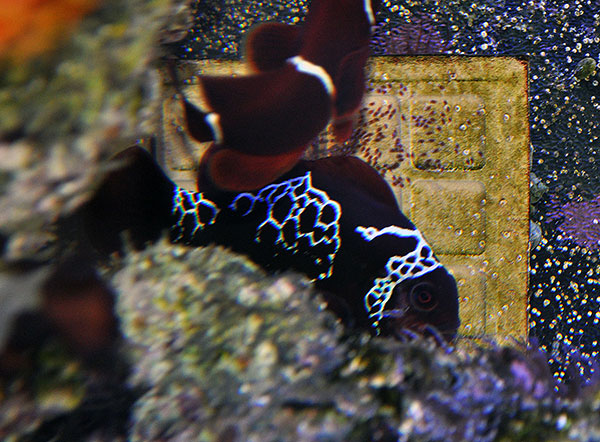
June 27th, 2012
June 27th represented the 4th day of Maracyn + Maracyn II treatments, and once again, it appeared I had potentially averted a crisis or loss. The condition of the Lightning Maroon was drastically improved. The eggs…the eggs were showing eyes? They had the classic silvery look of clownfish eggs before they’re going to hatch.
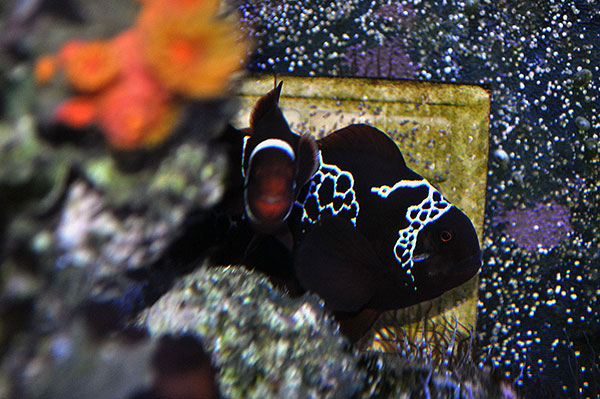
I had been worried that these eggs would be hatching out while I was on a trip to Boston to speak at the Boston Reef Society; but now, only 6 days post spawn, I was very worried that a hatch could come sooner than expected. The signs (and the data out there) said it was possible, sure, but maybe not likely? Still, if I waited too long and did nothing I could miss the hatch. Conversely, if I pulled the nest too early, I could miss killing the eggs before they actually had fully developed. Honestly though, I felt far less pressure about the decisions I was about to make than any of the disease-related issues with the Lightning Maroon; this is clownfish breeding, I can handle it.
There was really only one route to go – I had to sit and watch the tank. The lights go off at 12:15 AM, so I got things situated for a possible hatch. I used a small LED flashlight at the far corner of the tank as a larval attractant.
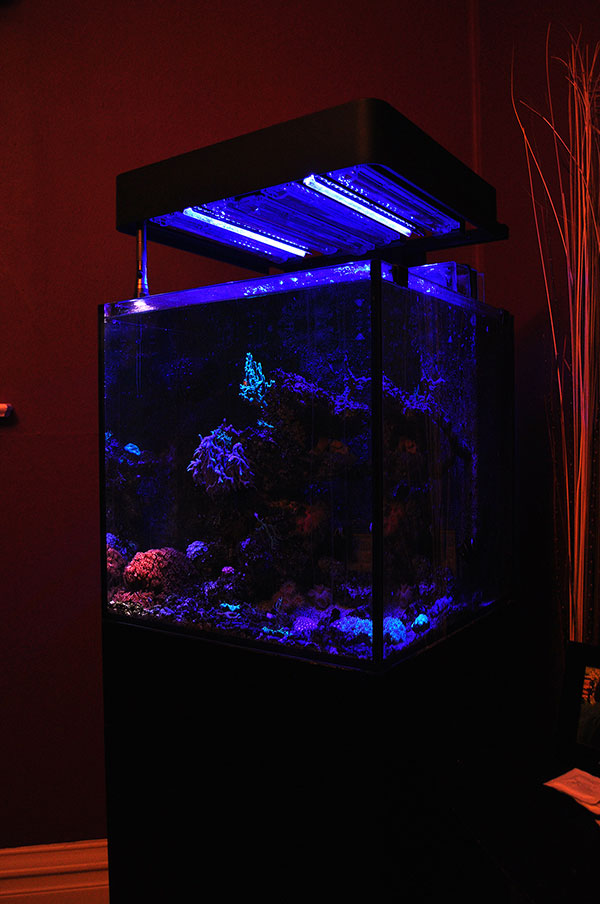
While waiting for the lights to go out, I prepared the area with buckets and siphons to take out larvae should they hatch in the tank.
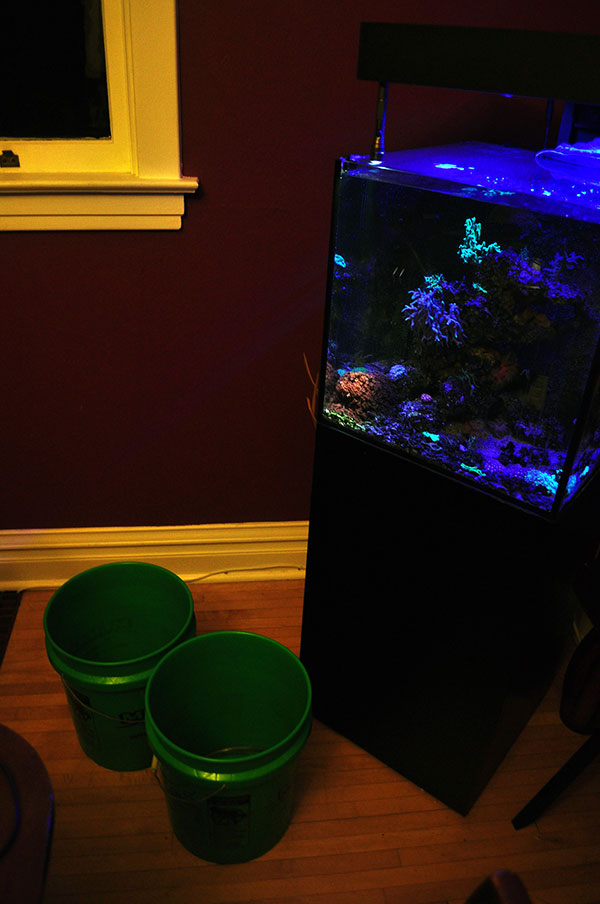
Downstairs, I prepared a black round tub to receive broodstock water and possible babies.
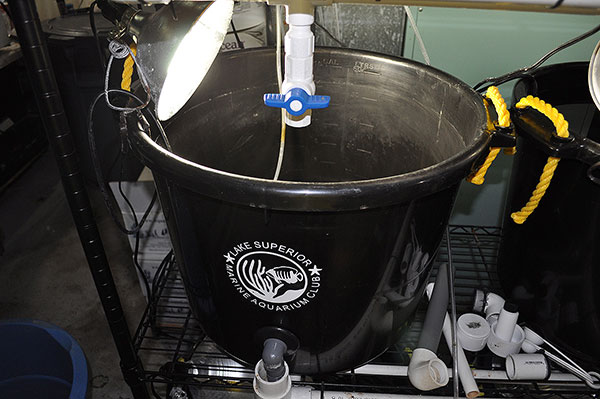
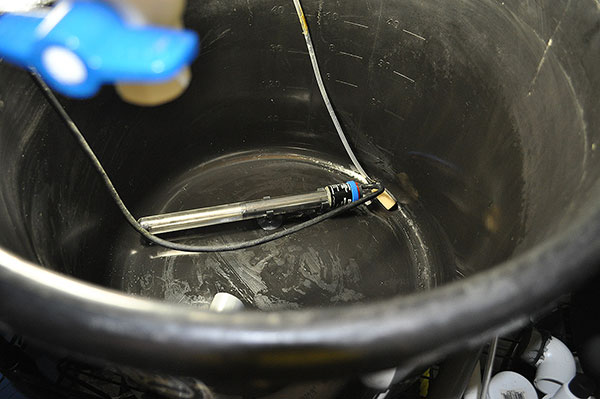
Lights went out, and it was time to wait. All pumps were turned off through an extended feed timer on my Apex Lite (which would ensure they’d all come back on in the event that I somehow forgot about them and went to be). I did have to unplug the battery backup on the Vortech…can’t have babies going through that pump either. I’d check every once in a while, and initially got excited around 12:20 AM when I saw movement in the beam of the flashlight – until I realized it was copepods swimming around.
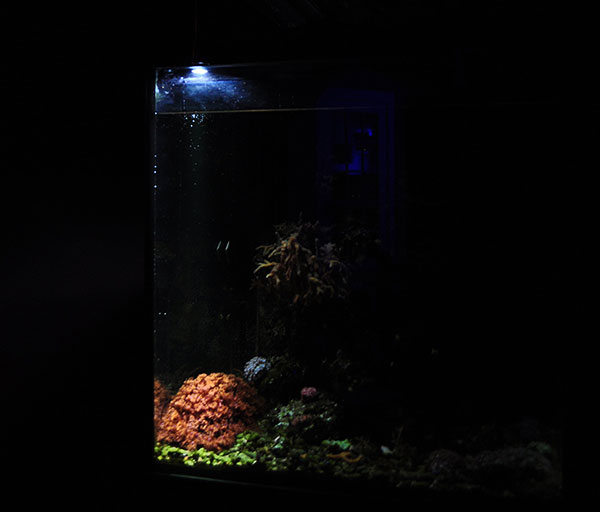
Many more checks turned up nothing, and I was starting to wonder if I had jumped the gun. Multiple plans of “what next” rolled around in my head, but they all disappeared at 1:23 AM on June 28th, 2012.
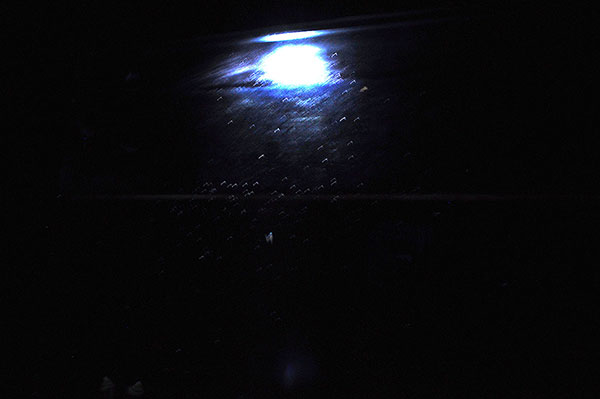
That is not a copepod. If you can’t really see it, maybe this one will help:
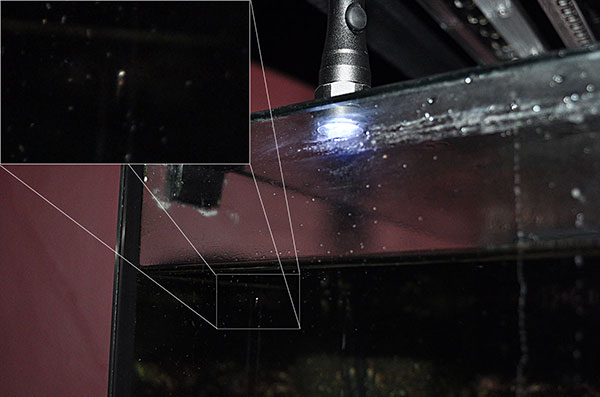
The moment that first baby clownfish showed up, I pulled the tile under almost complete darkness, moving it downstairs in a bucket with a lid and 5 gallons of water from the broodstock tank. I set it up for artificial hatching, and assumed that come morning, I’d see hundreds of clownfish swimming around. That was the hope…
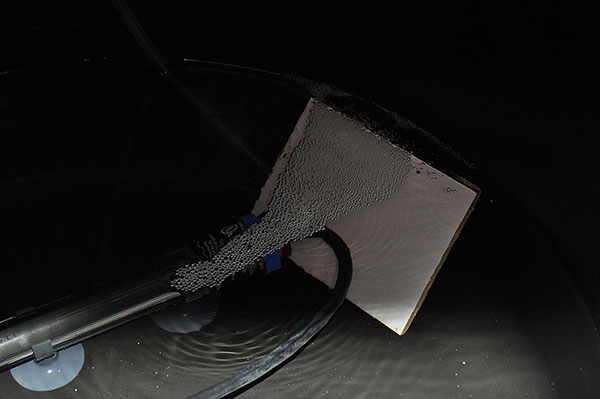
June 28th, 2012
So much for hatching overnight. There was ONE baby in the tub. Terrific (<-sarcasm). 1 is better than none, so in the interest of keeping the one alive, I was forced to tinge the water green with a very light treatment of RotiGreen Nano, and a very small addition of rotifers (lest the baby starve).
The worst fear is that I had somehow killed the eggs in the move or prevented the hatch, which would have generally killed the eggs overnight. There was only one way to find out. I took a quick look at the tile.
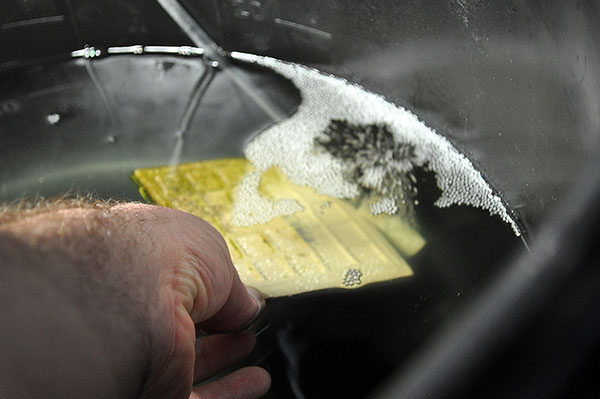
And here’s what I saw…
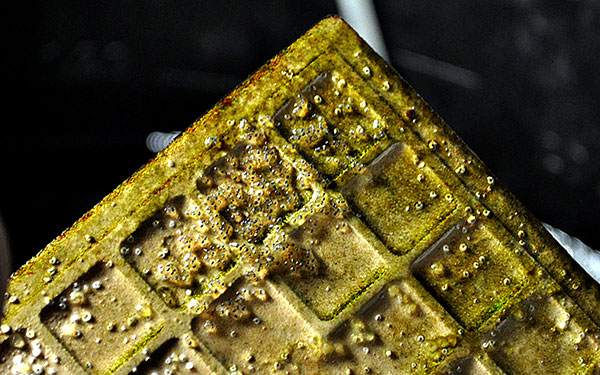
They look perfectly fine. And what a great opportunity, thanks to the advent of digital photography and Photoshop, to get a headcount.
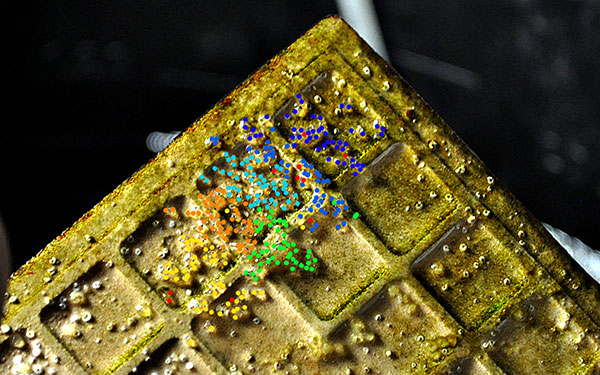
That’s roughly 310 eggs (each color group represents me counting to 50, with the scattered red dots representing the last 10 I counted). It’s not an exact headcount, but gives a great approximate number of eggs. Hardly the spawn of several thousand that some Maroon Clownfish are known to put down, but I’ll take it all the same. So very carefully, this tile went back into the black round tub…
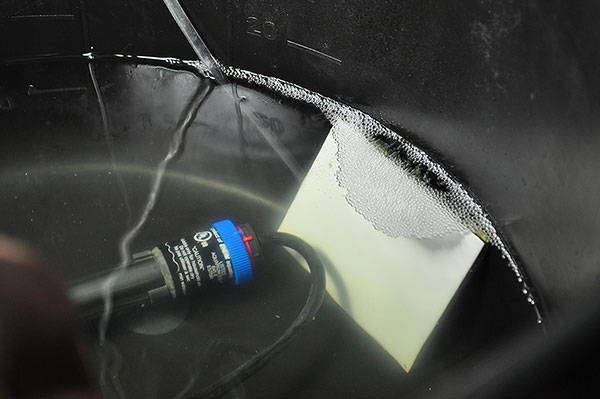
…So long as the eggs didn’t die, there was still hope. The rest of the tension filled day was spent fighting the urge to recheck the tile for dead eggs. Come nightfall, I stuck with the photoperiod that the eggs had been used to, and turned the lights out in the basement a little early so that things were basically pitch black by 12:15 AM on June 29th. Just after 1:00 AM, a quick check with the flashlight caused me to announce to the world, “Ladies and Gentleman; we’re rearing Lightning Maroon Larvae.”
June 29th, 2012.
With only hours before my departure to Boston, I had to get things set up right. As the night progessed into the wee hours of morning (that we normally still call “night”), I fired up the lights, and checked the tile:
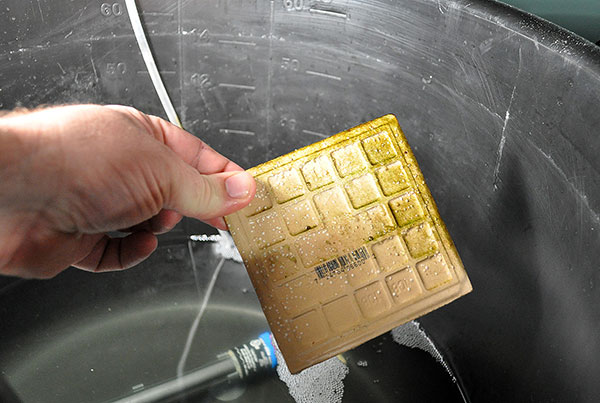
No stragglers – that means a 100% hatch. That means 300-ish baby maroon clownfish. 300 chances to see something really fantastic down the line. So long as we don’t botch rearing them!
Mike Doty, a fellow aquarist who happens to live 4 blocks away from me, had been over late (or early if you want to get technical) to see how things were set up and to know where everthing was…well that and to share a beer, toasting this milestone. Mike would be completely in charge of rearing the larvae in my absence.
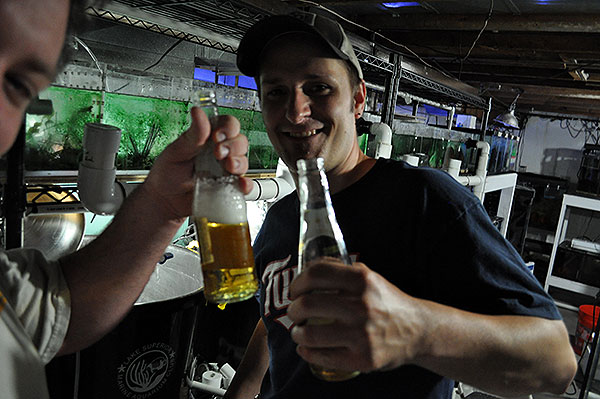
While I got my share of incredulous inquiries about that, I actually had more confidence in Mike than myself; Mike had taken a pair of extra Maroons from me, spawned and reared a couple batches, so he was perfectly qualified in my book (I’ve done clowns, but never maroons before). We got the larval tub set up with greenwater and rotifers, and in the early afternoon I embarked on my all-day trek to Boston.
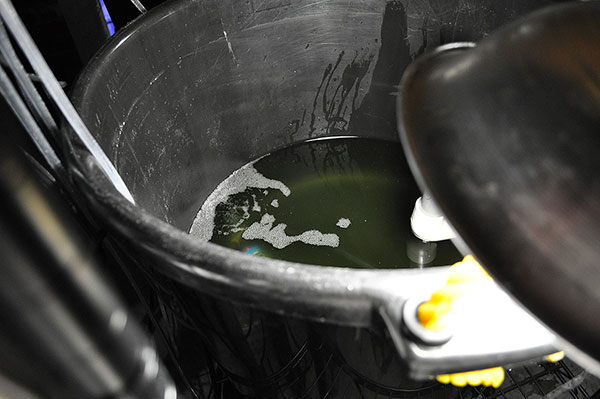
July 1st, 2012
I returned home from Boston in the afternoon, anxious to see how things had gone. Mike had kept me updated via texts during my absence and things sounded good. The main message I got from Mike was that my three rotifer cultures had failed to keep up with demand, and he had actually depleted his as well. I wondered, would we wind up losing this batch to starvation?!
July 2nd, 2012
I’m indeed burning through rotifers, but the cultures seemed to rebound and were producing enough for the moment. The rotifers in the BRT were also clearing out phytoplankton pretty frequently.
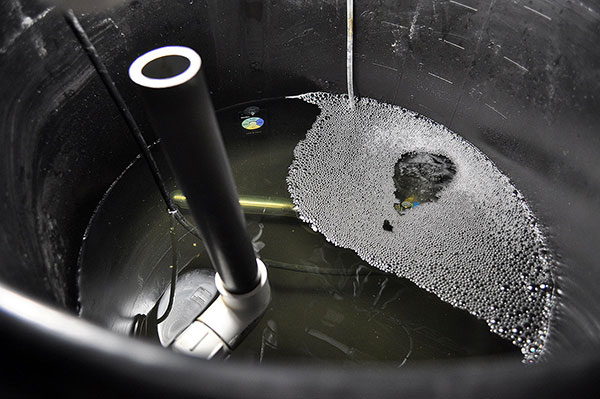
Mike and I had set up a drip for the tub using a spare brine shrimp hatchery and a micro ball valve from Julian Sprung’s Two Little Fishies. Not only is the drip good for top off, but also for introducing foods (phytoplankton) and ammonia control (CloramX) slowly.

Seeing that there were still many babies (some losses, but still many viable larvae), I took a photo for you all; your first look at what *Could be* a larval Lighting Maroon Clownfish, roughly 4 days old.
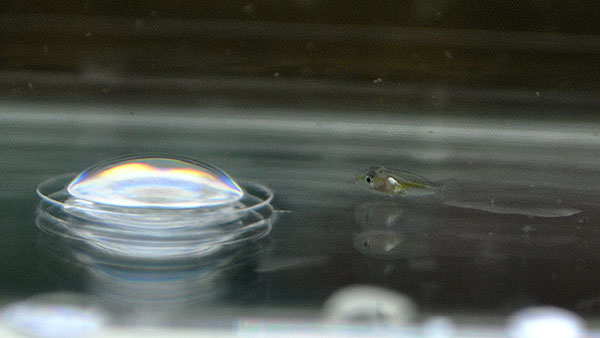
July 5th, 2012
Things have gone well, as I’ve slowly doubled the larval rearing volume to 10 gallons, keeping a watchful eye on the ammonia alert badge as I continue to feed 4-5 gallons worth of rotifers into the tub per day. With the warm basement temperatures (normally in the upper 60’s to lower 70’s, but lately 78F), the rotifer cultures are now roaring; I’m forced to feed them twice daily at a rate of 30 drops of RotiGrow Plus (and 30 drops CloramX).
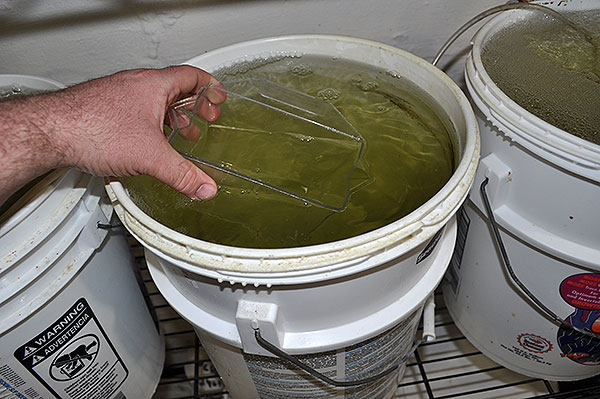
I’ve done a couple pre-feeding rotifer enrichments with Super Selcon as well, just to keep the DHA levels up. However, today, now just before 7 days old, we reach another step in the rearing process. Today it was decided the larvae were finally ready to feed on APBreed’s TDO, size A. And after the second feeding, it was fair to say they are indeed consuming it.
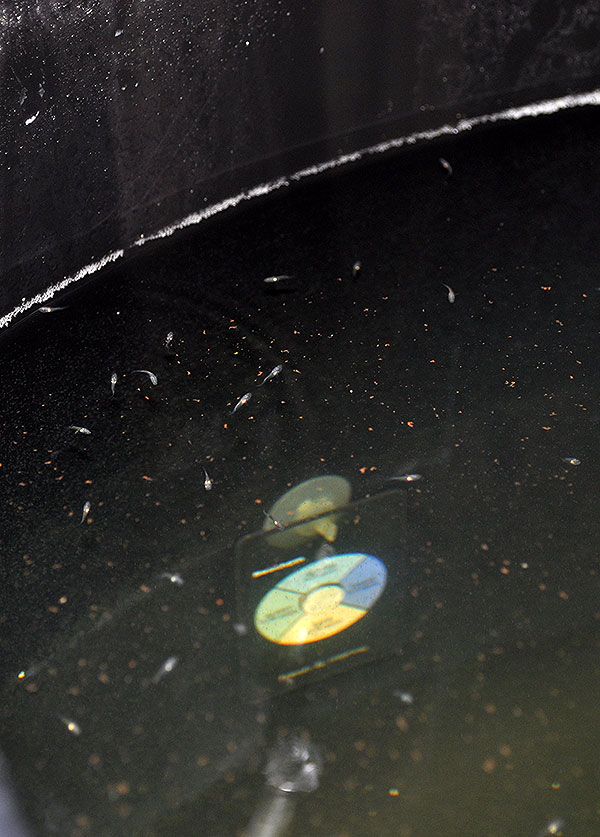
So now we sit and wait. Any day now, we will catch the first glimpses of stripes as these larval Maroon Clownfish go through metamorphosis and settle out into juveniles. Most likely, I suspect that even if we have fish that will one day show the “Lightning” phenotype, we won’t see it at this stage in their development. But at this time, it is anyone’s guess. If you’re a betting man or woman, it’s time to place your wagers. Our first glimpse at the possibilities are just around the corner.
Recent Comments